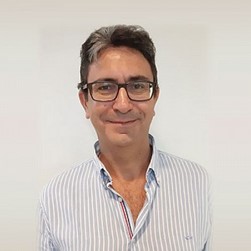Hystore Presents Agatino Nicita: Hystore’s Expert Of World Cafè Method
The Hystore Project Is A Scientific Project That Aims To Develop New Technologies That Will Improve Thermal Energy Storage (TES) Systems. However, Scientific Developments Must Come Along With Social Acceptance. With Social Acceptance, The Implementation Of New Technologies And Urban Transformation Receive The Support Or Approval Of The Community, Having More Impact.

This is why Agatino Nicita joined Hystore and he is giving his pivotal contribution to the success of the project with the use of the World Cafè method and its informal approach. Mr Nicita works at the Institute for Advanced Energy Technologies of the National Research Council (CNR-ITAE) in Messina, Italy, and his main expertise is the evaluation of the socio-economic impacts of environmental and energy technologies.
We interviewed Mr Nicita to understand how he met the World Cafè methodology and why he believes is key to gaining social acceptance in the community where the projects are testing its technologies thanks to its co-creation and co-design methods and tools.
Why did you start working with the Word Cafè method?
To achieve a full energy and environmentally friendly energy system, we can’t count on the development of technical and technological artifacts only. People must play a central role by changing their behaviour and using more efficient appliances, products, and systems, and optimizing their consumption.
Based on my interest in innovation diffusion and technology adoption processes, I’m passionate about involving potential users – consumers, installers, distributors, and decision-makers – in technology development to overcome obstacles and facilitate adoption.
How does this method differ from the others?
The World Café approach fosters collaboration among individuals from diverse backgrounds to reach a common goal through interactive events like workshops and focus groups. This co-creation process encourages creativity, idea-sharing, and experience exchange. Active participation enhances the adoption and diffusion of new products and services, fostering feelings of attachment, identification, and commitment. Products and services resulting from co-creation are more likely to succeed due to their clear added value for users.
Why does it work?
The key principle of this methodology is the ‘symmetry of ignorance’, which means we are all experts in some areas, but we deficient in many others. Because of this asymmetry, all participants are equal, and everyone can contribute to the development of a project or to find a solution to overcome a problem. The main challenge for the success of this methodology is to build a common language that allows each participant to meaningfully discuss the ‘value’ of their contribution with the others.
How to identify participants and topics? Who is its main target?
The success of a co-creation process hinges on various factors: the topic, objectives, and participants involved. Firstly, defining clear objectives and results is crucial to determining desired outcomes and their utilization, such as envisioning applications of technology or assessing reactions to prototypes.
Secondly, identifying stakeholders and target groups, including customers, private and public actors, and NGOs, is essential. Once identified, understanding their interests and motivations enables them to leverage their motivations for the activity and to identify common goals that foster collaboration. They need to see the added value of this interaction in relation to their own goals and objectives. It is important to bear in mind that each stakeholder’s motivation varies based on background, role, and interests, ranging from technology enthusiasts to environmental activists or those seeking participation opportunities for networking or community engagement.
How to encourage the partners to participate? What motivates them?
In Hystore, we conduct individual meetings with partners from the four pilot sites where new thermal energy storage technologies will be implemented. During these sessions, I outline the methodology, initiate brainstorming on potential topics and stakeholders, and address anticipated challenges in engaging those unfamiliar with the approach. Rest assured, we tailor the method to fit each unique context and environment.
What are the main challenges for the Hystore Project using the World Cafè method?
Effective implementation of this methodology necessitates meticulous activity planning, emphasizing teamwork and leveraging diverse skills within the project partnership for co-designing actions. It is in this collaborative framework that the meetings occur.
Each pilot site functions as a living laboratory where, alongside technical testing, we analyse people’s behavioural intentions and attitudes toward new thermal storage technologies. This analysis conducted partly through the co-creation methodology and partly through other methods, aims to promote and expedite technology adoption.